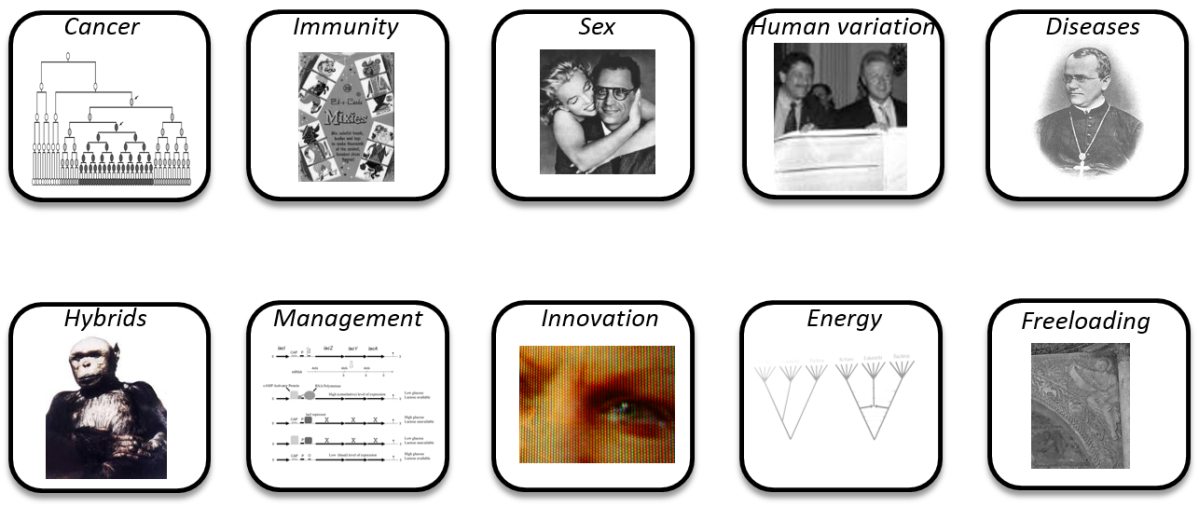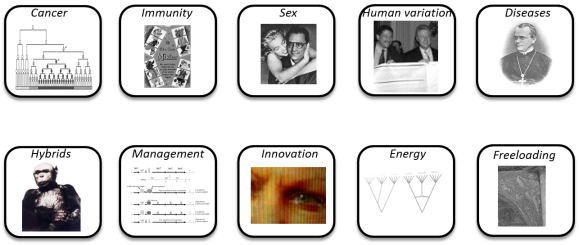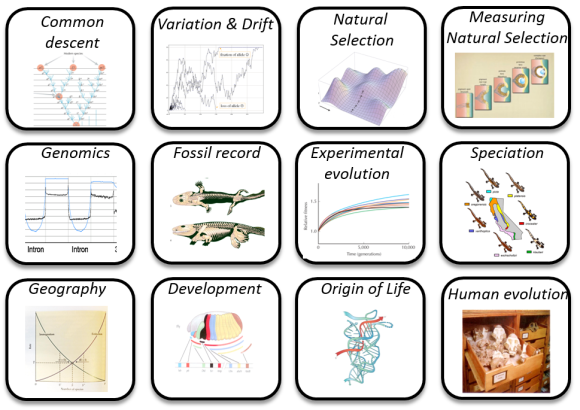

Joseph Swift has written a book review for ‘The Society of Genes’ in the March 25th issue of Science: “Despite the genome’s complexity, the authors are careful to keep the text accessible. Indeed, at times the reader may be reminded of those rare high-school teachers who could reveal the simple beauty hidden within abstract scientific theories.”
http://science.sciencemag.org/content/351/6280/1403.full


In today’s issue of The Times Higher Education, Prof. Charalambos Kyriacou writes “Yanai and Lercher are masters of the metaphor, and while I felt that there were a few omissions that might have enhanced their argument, I was seriously impressed with their visions of selfish gene society, in addition to their engaging and humorous style of writing.”


“If Darwin had been able to observe cancer cells through a microscope, he would have had just as much evidence for his theory as he obtained by studying complete organisms.” The Society of Genes.

[the only figure from Darwin’s ‘Origin of Species’]
Ernst Mayr, one of the 20th century’s leading evolutionary biologists, nicely pointed out that Darwin’s theory of evolution is actually multiple theories: 1. Change occurs (species are not fixed), 2. Common descent (all species are related), 3. Evolution occurs gradually, and 4. Natural selection (One Long Argument, 1991). Jerry Coyne, in his wonderful book ‘Why Evolution is True’, also included ‘Genetic drift’ as another agent of evolutionary change.
These principles were first sketched out to describe the evolution of species, but they can all equally be applied to the evolution of cancer in an organism’s population of cells:

[Image from Bob Weinberg’s Biology of Cancer]
Here’s a snippet from a relevant part of Chapter 1 of our book: The cells of our bodies accumulate changes to their genes from cell generation to cell generation (principle 1: change occurs). Each of us is a colony of cells, all of which descended from a single cell with a single set of genes—the fertilized egg. In cancer, the gene set controlling one renegade cell lineage starts to follow its own agenda, abandoning its cooperation with the rest of the body. This sublineage of cells can be considered a new “species” relative to the noncancerous cells (principle 2: common descent). But no single mutation can transform a perfectly healthy cell into a cancerous one—instead, the renegade genomes accumulate changes slowly, one by one (principle 3: evolution occurs gradually). The proportion of the body taken up by a given cell lineage can change due to heritable mutations—pre-cancerous cells that divide faster outcompete their well-behaved neighbors (principle 4: natural selection). Not all genomic changes are relevant to the function or the proliferation of the cell, so some changes may become common in a population by chance alone (principle 5: chance changes exist).
This aspect of cancer shows us that evolution is not something that only happened in the past. It is happening everywhere, all of the time, even within the confines of your own body. Because of that, it is inevitable that we get cancer unless we die of another cause first. However, even if we do get cancer, it is not inevitable that we must die of it – curbing the growth of cancers is one of the hardest challenges in biology, but ongoing research keeps finding new ways of helping our immune systems to succeed in this task.

 Even though genomes have been sequenced for over two decades, I find that genomics is still not properly taught in most universities. In particular, Evolution is generally not awarded its proper place in the understanding of genomes.
Even though genomes have been sequenced for over two decades, I find that genomics is still not properly taught in most universities. In particular, Evolution is generally not awarded its proper place in the understanding of genomes.
In 2003, and then again in 2004, as a postdoc at the Weizmann Institute I created a course called Evolutionary Genomics which was a lot of fun. I taught it a couple more times at the Technion as an assistant professor, but it was always my dream to turn it into a book.
Joining forces with Martin Lercher we made that dream a reality and we are so proud of the The Society of Genes book! We did it by revamping the old course together. I’m happy to make available our slides here:
I hope these might be helpful to anyone interested in teaching The Society of Genes!
Itai Yanai, yanai.itai[at]gmail.com


At the Technion, I taught for many years a course on Evolution, of which I am very proud.
The first half introduces the main mechanisms of evolution—natural selection and genetic drift—and the second explores how evolution occurs in many topics, each of which could fill up an entire course by itself.
I’m happy to make are powerpoint slides available for everyone (links below). I think they can be used for anyone learning by themselves or setting up a similar course.
The main text is the Barton et al. Evolution book, but it is really only very loosely based upon it. There are also many influences of Jerry Coyne’s Why Evolution is True, Stephen Stearn’s Yale course, Richard Dawkins, the work of Richard Lenski, among many others. Each lecture also summarizes a chapter of Darwin’s The Origin of Species.
Enjoy and feel free to contact me about it.
Itai Yanai, yanai.itai[at]gmail.com
